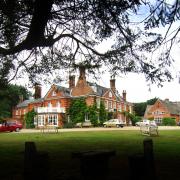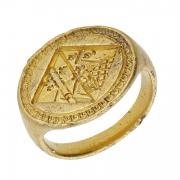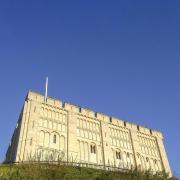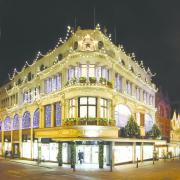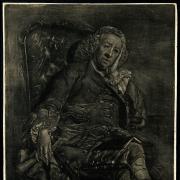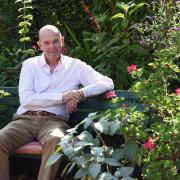Christopher Layer was hanged for high treason in 1723. But who was he? What did he do? And why was a memorial added to his Aylsham home 185 years later?
Christopher was part of a failed conspiracy to overthrow the King alongside aristocrats, senior statesmen and a bishop. However, Christopher was the only one to be executed.
Born in November 1683, he was raised by an uncle committed to the Jacobite cause of returning the monarchy to the exiled catholic Stuarts.
The young Christopher attended Norwich Grammar School and trained as a lawyer, first in Aylsham and then London. He was reported to be vain, discontented and ambitious.
He and his wife, Elizabeth, the daughter of a Norfolk landowner, lived at West Lodge in Aylsham, with a second home in London.
Christopher, like his uncle and devoted himself to the Jacobite cause, dreaming that with the return of a Stuart king he would be made Lord Chancellor.

Catholic King James II had been deposed in 1688 and replaced by his protestant daughters Mary, and then Anne.
His catholic son, also James Stuart, was exiled first to France and then Rome, becoming known as the King over the Water, or the Old Pretender.
When Queen Anne died in 1714 the crown went to her closest protestant relative, George I. The arrival of a Hanoverian outsider, followed six years later by the economic disaster of the South Sea Bubble, shook public confidence in Britain’s leaders.
As calls for the return of the King over the Water grew louder Christopher was working his way into aristocratic circles, becoming legal adviser to Jacobite Lord North, who had lost a hand in battle and replaced it with a hook.
A plot was hatched. The key conspirators included Lord North, fellow soldier Lord Orrery, the Duke of Wharton (who held a public funeral for the South Sea Company, complete with musicians and a hearse) politicians including a former Lord Chancellor and bishop Francis Atterbury.
In 1721 Christopher met the Old Pretender in Rome. He claimed he was in Italy to sort out the affairs of a client, Lady Margaret Paston, but was carrying a list of supporters of the Jacobite cause. Among them were three prominent Norfolk men, Sir Nicholas L’Estrange of Hunstanton Hall, Sir John Wodehouse of Kimberley Hall, near Wymondham, and Thornaugh Gurdon, of Letton Hall, near Dereham. All later denied involvement in the plot.
On his return Christopher met more figures from the Jacobite underworld. Most would betray him. Over dinner with one at a pub in Leytonstone, Christopher revealed the plans to restore the Stuart monarchy. First, King George would be captured and imprisoned and prime minister Robert Walpole (another Norfolk man) and his principal ministers would be arrested.
The plotters would take control of the House of Commons, the Royal Mint and the Bank of England while army officers would support the uprising and encourage ordinary citizens to join them.
Christopher believed almost 300 Members of Parliament would join the revolution and that most Norfolk aristocrats were Jacobites.

But on August 24, Bishop Atterbury was arrested and imprisoned in the Tower of London. Lord North was captured as he attempted to escape to France and was also imprisoned in the Tower. Soon Lord Orrery joined them.
As the conspiracy unraveled a warrant was issued for Christopher’s arrest and in September he was captured near his London house, where two cases of pistols plus muskets and powder were found. He claimed they were for hunting.
After failing to bribe his captors he too was sent to the Tower – and kept in chains, unlike his fellow conspirators.
Christopher was convinced he was crucial to the plot. Others were not so sure. The Dean of Norwich said: ‘No one that knows him will think him fit to be trusted with the secrets of any plot, or to be relied upon in any evidence he shall give about it.’
One of his most basic mistakes was to write down the plans and leave the document and other incriminating papers with a woman who ran a brothel in Lincoln’s Inn Fields. Soon after his arrest the brothel was raided and the papers discovered.
Accused of high treason and conspiracy to incite rebellion against the Crown, Christopher pleaded not guilty, but the evidence against him was overwhelming. The jury took less than 30 minutes to find him guilty.
He was sentenced to be hanged, cut down while still alive, and forced to watch while his bowels were removed and burned. His head was then to be cut off and his body quartered.
Despite torture Christopher refused to name his fellow conspirators. Seven times his execution date was delayed in the hope he would divulge more.
Of all the Jacobites arrested, he was the only one executed. Bishop Atterbury was exiled and Lords North and Orrery released.
By the beginning of the 20th century the plot seemed long forgotten. But Maharajah Duleep Singh of Elveden Hall, near Thetford, had a deep attachment to the Stuart family and when he discovered Christopher was a Norfolk man he commissioned the memorial plaque.
It is still there, a poignant reminder of one man’s loyalty to a cause and to those he considered to be his friends.






